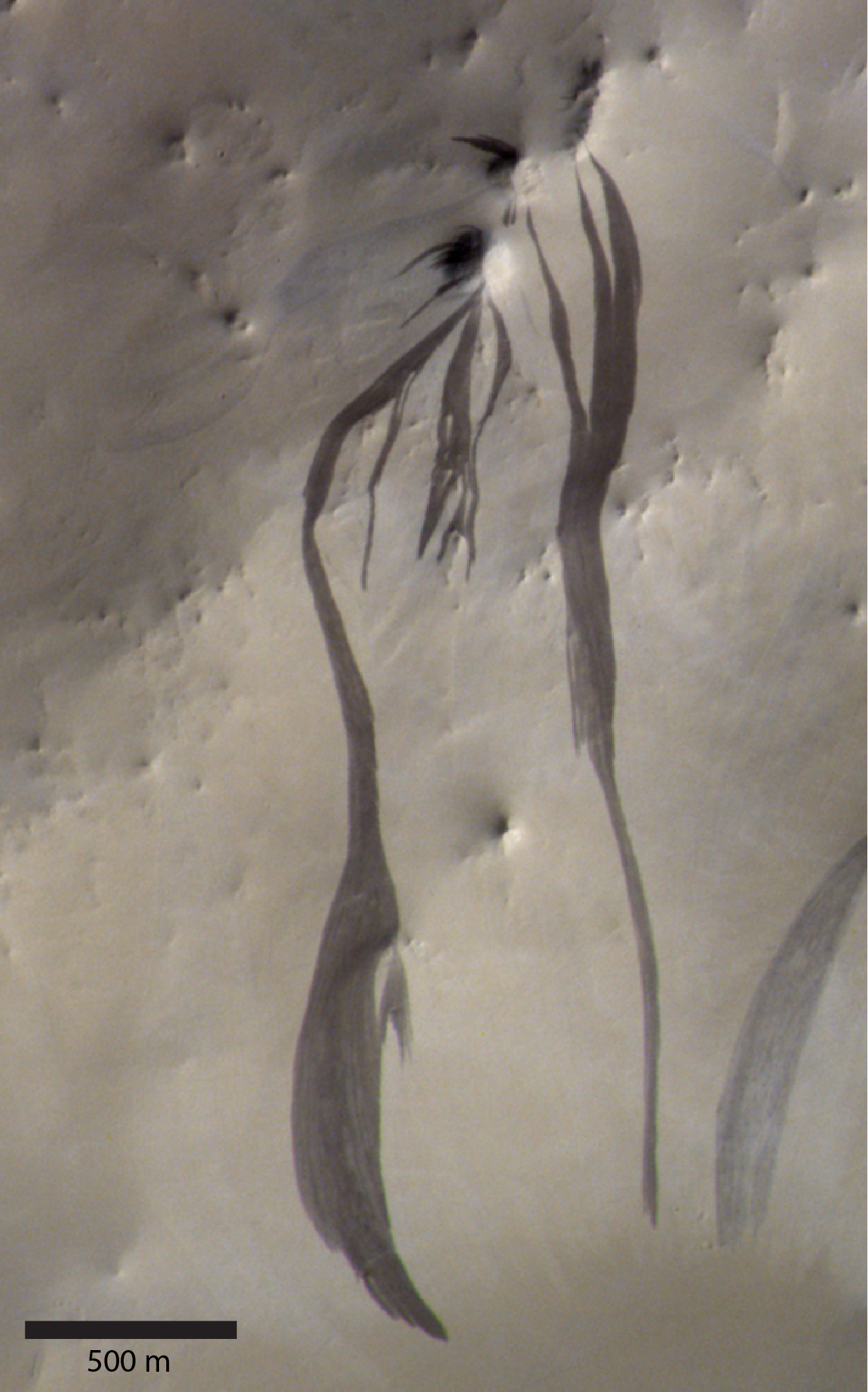First identified in the 1970s by NASA’s Viking mission, long, dark markings snake down Martian slopes, sometimes stretching across Mars’ surface for hundreds of feet. Scientists have watched some of these markings exist for decades, while others, known as “recurring slope lineae,” appear to fade in a single season. Nonetheless, they all starkly stand out against the planet’s dusty red surface.
Given that modern Mars is dry and arid, with temperatures rarely climbing above the freezing point of water, the origin of these streaks has long been a topic of heated debate. For years, they were seen as one of the most compelling signs that liquid water might still exist on Mars, suggesting a rare pocket of habitability on an otherwise arid planet. The leading theory speculated that salty water was seeping from underground sources — like buried ice or subsurface aquifers — allowing it to briefly flow across the cold Martian surface. But new evidence suggests something else might be driving the phenomenon.
“A big focus of Mars research is understanding modern-day processes on Mars — including the possibility of liquid water on the surface,” said Adomas Valantinas, a postdoctoral researcher at Brown University in a statement. “Our study reviewed these features but found no evidence of water. Our model favors dry formation processes.”
Using machine learning to analyze a massive dataset of over 86,000 high-resolution satellite images of these streaks, Valantinas and his colleagues now believe that wind and dust — rather than flowing water — are the more likely culprits.
To figure this out, they created the first global map of Martian slope streaks, cataloging over 500,000 individual features across the planet’s surface. “Once we had this global map, we could compare it to databases and catalogs of other things like temperature, wind speed, hydration, rockslide activity and other factors,” said Valentin Bickel, a researcher at the University of Bern. “Then we could look for correlations over hundreds of thousands of cases to better understand the conditions under which these features form.”

The geostatistical analysis revealed that slope streaks and recurring slope lineae don’t appear in places where you’d expect to find signs of liquid water or frost. For instance, watery slopes would be expected to face a specific direction, experience extreme temperature swings, or exist in high humidity. Instead, the study found that these streaky features are more common in areas with stronger winds and heavier dust activity.
The researchers say this points to the streaks forming when thin layers of fine dust slide down a steep hillside. What precisely causes these slides can differ, the team explains, but slope streaks tend to show up more often near fresh impact craters. There, the shock from an impact might shake dust loose. Meanwhile, recurring slope lineae are usually found in areas where dust devils or rockfalls happen frequently.
Understanding how features like slope streaks and recurring slope lineae form is crucial in the quest to unlock the secrets of Mars and guide future Red Planet exploration efforts.
By using a big data approach to study these patterns from orbit, scientists can eliminate certain possibilities without having to send costly missions to the surface. This means missions can focus more efficiently on the most promising locations — bringing us closer to discovering whether Mars could have supported life and ensuring we protect the planet’s fragile environments as we send spacecraft deeper and deeper into space.
The study was published on May 19 in the journal Nature Communications.



